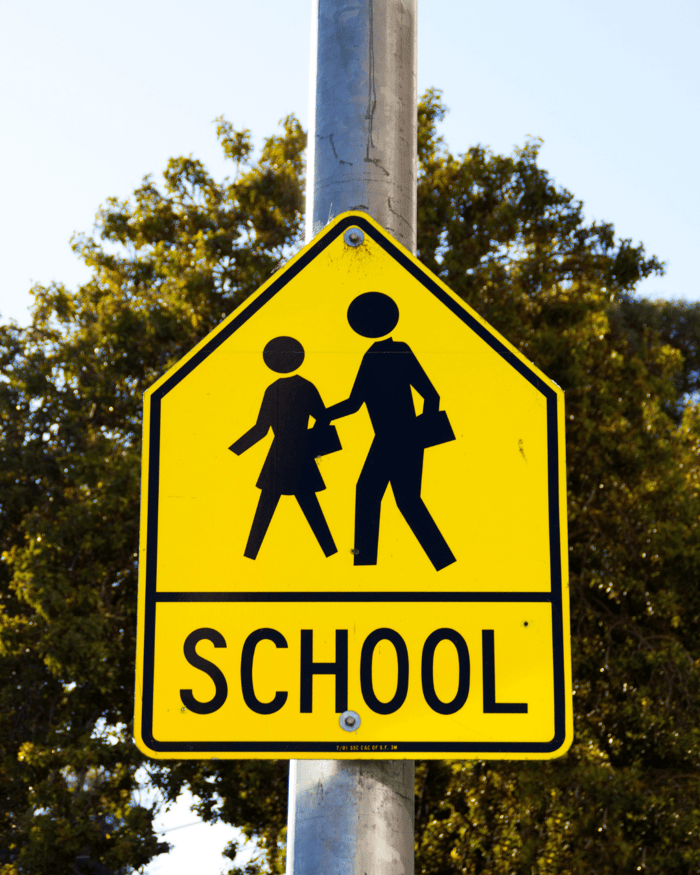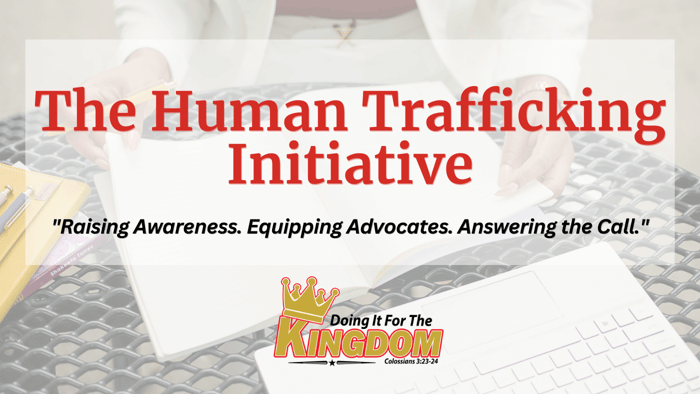Table of Contents
- At Risk and Overlooked: Understanding Human Trafficking in K-12 Schools
- Why K-12 Schools Are Vulnerable to Human Trafficking
- How Human Trafficking Happens in Schools
- Real-Life Cases of Human Trafficking Involving School-Aged Children
- Warning Signs of Human Trafficking in K-12 Schools
- Why Human Trafficking in K-12 Schools Goes Undetected
- Organizations Helping to Fight Trafficking Human Trafficking in K-12 Schools
- How Schools and Communities Can Respond
- Final Thoughts
- FAQs
At Risk and Overlooked: Understanding Human Trafficking in K-12 Schools
At Risk and Overlooked: Understanding Human Trafficking in K-12 Schools
 When we think of school, we often picture a safe space—where children learn, grow, and prepare for their future. However, that picture is tragically incomplete for far too many students across the United States. Human trafficking is not just a distant, hidden crisis. It’s happening in our K-12 schools, affecting students in middle and high school who are groomed, recruited, and exploited—often without anyone noticing.
When we think of school, we often picture a safe space—where children learn, grow, and prepare for their future. However, that picture is tragically incomplete for far too many students across the United States. Human trafficking is not just a distant, hidden crisis. It’s happening in our K-12 schools, affecting students in middle and high school who are groomed, recruited, and exploited—often without anyone noticing.
This blog explores how human trafficking shows up in school settings, red flags educators and parents should look for, real-life cases, and how schools and communities can respond with wisdom, vigilance, and compassion.
Why K-12 Schools Are Vulnerable to Human Trafficking
Children and teens are particularly susceptible to grooming and recruitment due to:
Emotional vulnerability and low self-esteem
Unstable home lives, abuse, or neglect
Lack of awareness about trafficking tactics
Peer pressure and online influence
Access to smartphones and unsupervised internet use
Traffickers are increasingly using social media, gaming apps, and direct messaging to contact students right under the noses of school staff and families.
Some traffickers also target students experiencing poverty, homelessness, or instability in the foster care system. These students may seek basic needs like food, clothing, or a place to stay—needs that traffickers pretend to fulfill.
How Human Trafficking Happens in Schools
Recruitment rarely looks like an abduction. In fact, many traffickers build long-term trust with their victims first. Here’s how it commonly happens in and around schools:
1. Peer Recruitment
Some traffickers use students to recruit other students, making it harder to detect. These recruiters may be paid or coerced themselves.
2. Online Grooming
Traffickers connect with students through apps like Snapchat, Instagram, and TikTok, presenting themselves as romantic interests, modeling agents, or job recruiters.
3. After-School Vulnerability

Unsuspecting students may be lured to parties, trap houses, or “dates” after school hours—especially if they lack supervision.
4. Emotional Manipulation
Traffickers often exploit unmet emotional needs, offering love, attention, or financial support in exchange for trust. In some cases, they create dependency by providing drugs, alcohol, or a place to stay.
5. On-Campus Interactions
In some cases, traffickers may pose as older students, security personnel, or after-school program participants. They may even wait at bus stops or near school entrances to build relationships over time.
6. Fake Opportunities
Traffickers may pose as managers or agents offering music, modeling, or social media influencing opportunities. These schemes often appeal to teens’ desire for independence or fame.
Real-Life Cases of Human Trafficking Involving School-Aged Children
✦ Case: Fresno, California (2022)
Two high school girls were recruited by a 23-year-old trafficker who contacted them via Instagram. They met him at a nearby fast-food restaurant and were later trafficked across state lines. Law enforcement credited a school counselor’s observant questions with helping break the case.
🔗 Source: ABC 30 Fresno
✦ Case: Cobb County, Georgia (2021)
A high school senior was arrested for recruiting multiple classmates to meet a trafficker posing as a modeling scout. Investigators found victims were being sold online for sex. The case was exposed after a teacher noticed bruises and sudden behavior changes in one of the girls.
🔗 Source: WSB-TV Atlanta
✦ Case: San Antonio, Texas (2023)
Local police discovered a trafficking ring operating through a local high school where students were offered money to “party” with older men. Several minors were recovered during a sting operation. The ring was linked to gang activity and social media grooming.
🔗 Source: KSAT News
Warning Signs of Human Trafficking in K-12 Schools
Whether you're a teacher, parent, coach, or counselor, look for these red flags:
Sudden changes in dress or appearance
Having gifts, cash, or new technology they can't explain
Skipping school or suddenly withdrawing from friends
Increased secrecy about online activity
Multiple older friends or boyfriends
Signs of emotional distress, anxiety, or PTSD
Tattoos that resemble ownership symbols, names, or barcodes
Signs of drug or alcohol use tied to a new friend group
Talking about a new “opportunity” or “job” that seems too good to be true
Why Human Trafficking in K-12 Schools Goes Undetected
Trafficking in schools is often overlooked because: 
Victims may not identify as being trafficked
Schools lack trauma-informed training
Students fear judgment, punishment, or retaliation
Perpetrators use manipulation and secrecy
Some victims believe their trafficker is a boyfriend or protector, making it emotionally difficult to come forward. Others are afraid of getting in trouble for skipping school, using drugs, or breaking curfew. That fear keeps them silent.
Organizations Helping to Fight Trafficking Human Trafficking in K-12 Schools
1. Shared Hope International
Offers training for educators and youth programs. Provides policy tools for schools and survivor-centered materials. 🔗 https://sharedhope.org
2. Love146
Focuses on prevention and survivor care. It offers a free curriculum called “Not a Number” designed for youth education in school and after-school settings. 🔗 https://love146.org
3. National Center for Missing & Exploited Children (NCMEC)
It provides reporting tools and digital safety education, including NetSmartz, an online safety program for kids, parents, and educators. 🔗 https://www.missingkids.org/netsmartz
4. Doing It For the Kingdom Inc.
We offer faith-based prevention training, workshops, and survivor-informed education for schools, churches, and families. Book a session or subscribe to our blog for updates. 🔗 https://www.doingitforthekingdom.org
How Schools and Communities Can Respond
1. Implement Prevention Education
Use age-appropriate, trauma-informed curriculum
Include lessons on healthy relationships and digital safety
Role-play common trafficking scenarios to build awareness and resilience
2. Train School Personnel
Equip teachers, nurses, counselors, and administrators to recognize red flags
Invite survivor advocates and anti-trafficking experts to present during staff development days
3. Create Safe Spaces for Disclosure
Ensure that school counselors and social workers are trained to handle disclosures
Set up anonymous tip boxes or digital reporting tools
Normalize open conversations around boundaries, safety, and consent
4. Promote Parent Involvement
Host digital safety nights and workshops with Q&A panels
Send home monthly newsletters with online safety tips, app reviews, and warning signs
5. Report and Intervene
If you suspect a student is being trafficked, contact local authorities or the National Human Trafficking Hotline at 1-888-373-7888 or text “HELP” to 233733.
Establish district-level policies that guide staff in mandatory reporting and safety planning
Final Thoughts
Human trafficking in K-12 schools is a heartbreaking but urgent issue. Every student deserves safety, dignity, and a future free from exploitation. By recognizing the signs, educating our communities, and creating safe environments for disclosure, we can interrupt trafficking before it escalates.
Traffickers are cunning—but awareness is powerful. Together, we can equip students to identify red flags, empower schools to respond compassionately and build a culture that values prevention.
At Doing It For the Kingdom, we believe prevention is possible—and it starts with awareness.
Book a school training, subscribe to our newsletter, or become a Kingdom Justice Partner today. Together, we can protect the next generation.
FAQs
1. How does human trafficking happen in K-12 schools?
Traffickers target vulnerable students by building trust, offering gifts or attention, and manipulating emotional needs. They may pose as older friends, romantic partners, or recruiters offering money or opportunities. Traffickers often groom students both online and in person.
2. What are the most common signs a student may be trafficked?
Warning signs include drastic changes in behavior, skipping class, secrecy about online activity, sudden access to expensive items, visible signs of abuse, emotional distress, and older or controlling relationships. Some students may also show signs of substance use or display symbols like tattoos indicating ownership.
3. Are schools legally required to report suspected trafficking?
Yes. In most U.S. states, educators and school staff are mandated reporters. If a staff member suspects abuse or trafficking, they are required to report it to child protective services or law enforcement following school or district policy.
4. How can schools protect students from trafficking?
Schools can implement prevention curriculum, provide staff training, partner with anti-trafficking organizations, host awareness events, and create safe spaces for students to report abuse or unsafe situations. Encouraging parent and community involvement is also key.
5. What resources are available for schools addressing trafficking?
Organizations like Shared Hope International, Love146, NCMEC, and Doing It For the Kingdom offer free or low-cost training, prevention programs, and resource guides tailored for schools, educators, and families.


